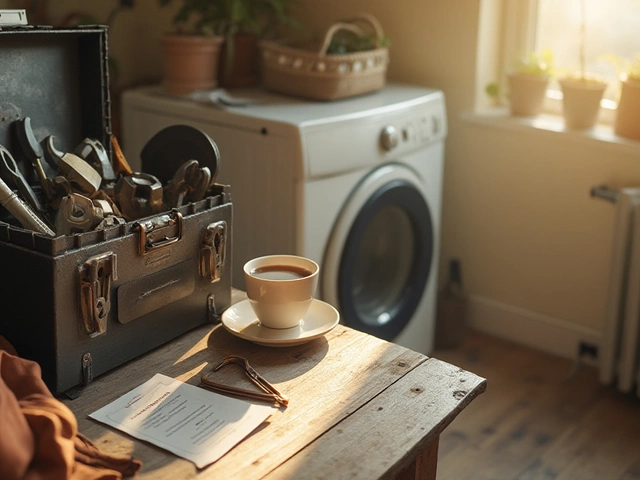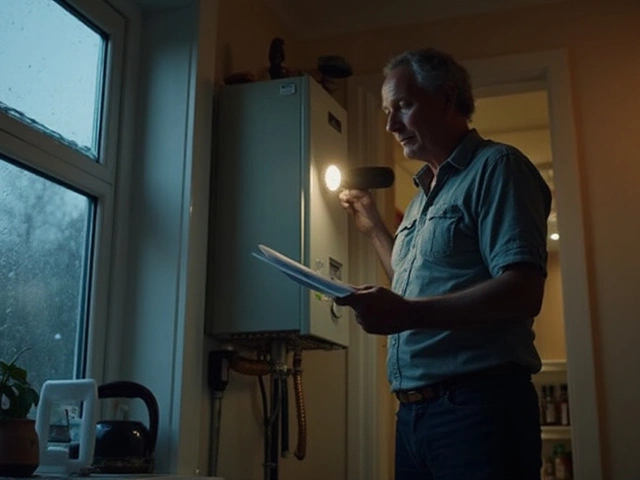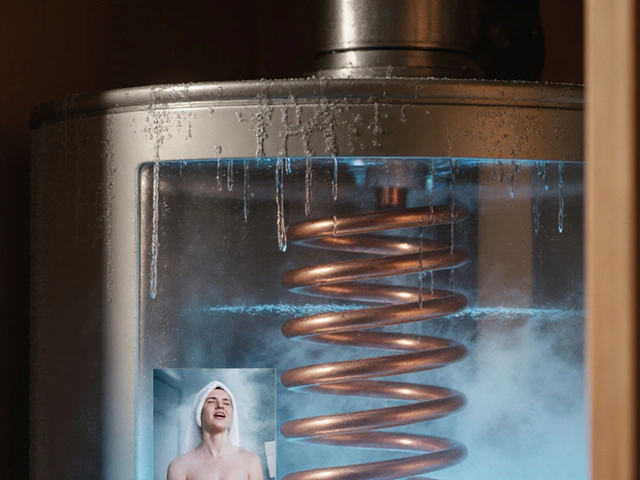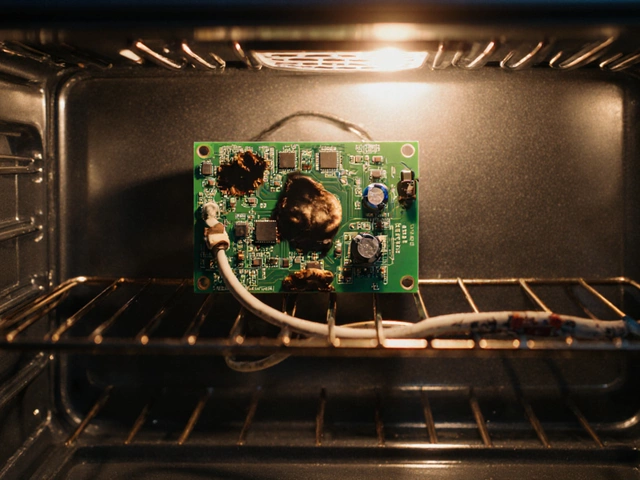Imagine stepping into your shower, expecting a warm cascade of water, only to be met with an icy surprise. We've all been there, and it's no fun. The good news? Most of the time, the fix is simpler than you'd think. Before you panic and call in the pros, it's worth getting familiar with the usual suspects behind this chilly dilemma.
One common issue is a faulty thermostat. Think of it as the heater's brain, which, if on the fritz, might not heat the water to the desired temperature. Checking or replacing it could be your ticket back to steamy showers.
Another typical cause is a tripped breaker or a blown fuse. Electric water heaters, much like other appliances, sometimes trip due to power surges or overloads. A quick peek at your electrical panel might solve the problem more swiftly than you'd guess.
- Introduction to Common Issues
- Faulty Thermostat: The Culprit
- Tripped Breakers and Blown Fuses
- Sediment Buildup: A Sneaky Problem
- The Importance of Regular Maintenance
- Preventive Tips for Consistent Hot Water
Introduction to Common Issues
Trouble with the hot water supply is a headache nobody wants. At the heart of your hot water problems are a few usual suspects that pop up time and again. Thankfully, knowing these can save time, money, and, let’s be real, a lot of grumbling.
One of the most frequently encountered issues is a faulty thermostat. If your water heater's thermostat isn't doing its job right, you might be stuck with lukewarm or even cold water. A thermostat that's out of balance can be like a misfiring conductor in a music orchestra — it just throws everything off.
Then we have tripped breakers and blown fuses. Since many water heaters run on electricity, it’s not uncommon for them to trip breakers during power surges or when overloaded. A simple reset might bring your hot water back to life.
Another sneaky issue is sediment buildup. Fact is, over time, minerals can settle at the bottom of your heater, making it less efficient and potentially even damaging it. Regular maintenance helps keep this pesky problem in check and extends the lifespan of your water heater.
Here's an interesting stat that might surprise you: according to a recent survey, about 30% of hot water complaints are due to these straightforward issues. This means with a little bit of know-how, many problems can be resolved without professional intervention.
Understanding these common causes sets the stage for efficient troubleshooting. Not only will you potentially save on repair costs, but you'll also enjoy the uninterrupted comfort of a toasty shower.
Faulty Thermostat: The Culprit
When you find yourself without hot water, a faulty thermostat is often to blame. This small device is critical for your water heater, setting the temperature and ensuring that it stays stable. If it's not working right, the whole system can go haywire.
How Does It Go Wrong?
Thermostats age and sometimes conk out unexpectedly. You might notice your water isn't as hot, or it's too hot and fluctuating wildly. A common tell-tale sign is inconsistent water temperatures even when the settings haven't changed.
Troubleshooting a Faulty Thermostat
Before diving into a fix, make sure you turn off power to your heater. Safety first, always!
- Remove the access panels on your heater. You'll likely find two thermostats – one for the upper half and another for the lower half.
- Use a multimeter to check the thermostat's continuity. A working thermostat should show continuity; if it doesn't, it's time for a replacement.
- Adjust the temperature settings gradually, not exceeding 120°F to avoid scalding and maintain efficiency.
Replacement: When Necessary
Sometimes, there's no getting around it – you need a new thermostat. They aren't usually expensive, and replacement is relatively straightforward. Still, if you're not comfortable handling it yourself, calling in a water heater repair professional might be the way to go.
By keeping an eye on your thermostat, you ensure that the heater runs optimally, extending its lifespan and saving you the inconvenience of sudden cold showers. A little attention can make a big difference!
Tripped Breakers and Blown Fuses
No hot water? One thing you shouldn't overlook is the electrical system feeding your water heater. More often than not, tripped breakers or blown fuses are the culprits. It's a straightforward issue but crucial to address promptly.
Checking a breaker might sound techno wizardry, but trust me, it's fairly simple. Start by finding your home's electrical panel, usually tucked away in a garage, basement, or utility room. Once there, look at the breaker switches. If one's in the 'Off' or middle position, flip it back to 'On'. This could restore your power and fix your hot water problem.
How to Detect a Blown Fuse
If you've got an older house, you might be dealing with fuses instead of breakers. When a fuse blows, the metal inside separates, interrupting the electricity flow. You'll need to unscrew and inspect the fuses; a blown one will often have a melted or discolored metal strip.
Common Causes for Tripping
Why do breakers trip or fuses blow in the first place? One cause is an overloaded circuit. Water heaters can draw a lot of power, especially if you're running multiple appliances concurrently. A power surge is another usual suspect.
| Common Issue | Resolution |
|---|---|
| Overloaded Circuit | Reduce concurrent appliance use |
| Power Surge | Check and reset breaker |
Once you've resolved the tripped breaker or blown fuse, monitor it. If it becomes a frequent issue, something else might be at play—like a faulty water heater element or wiring problem. In these cases, it's best to call in an electrician or technician to dig deeper. Safety first!
Tackling these issues can seem daunting, but they're often the first and easiest steps to reigniting your hot water supply. Before making a costly call to a professional, check your breakers and fuses—you might save yourself time and money.
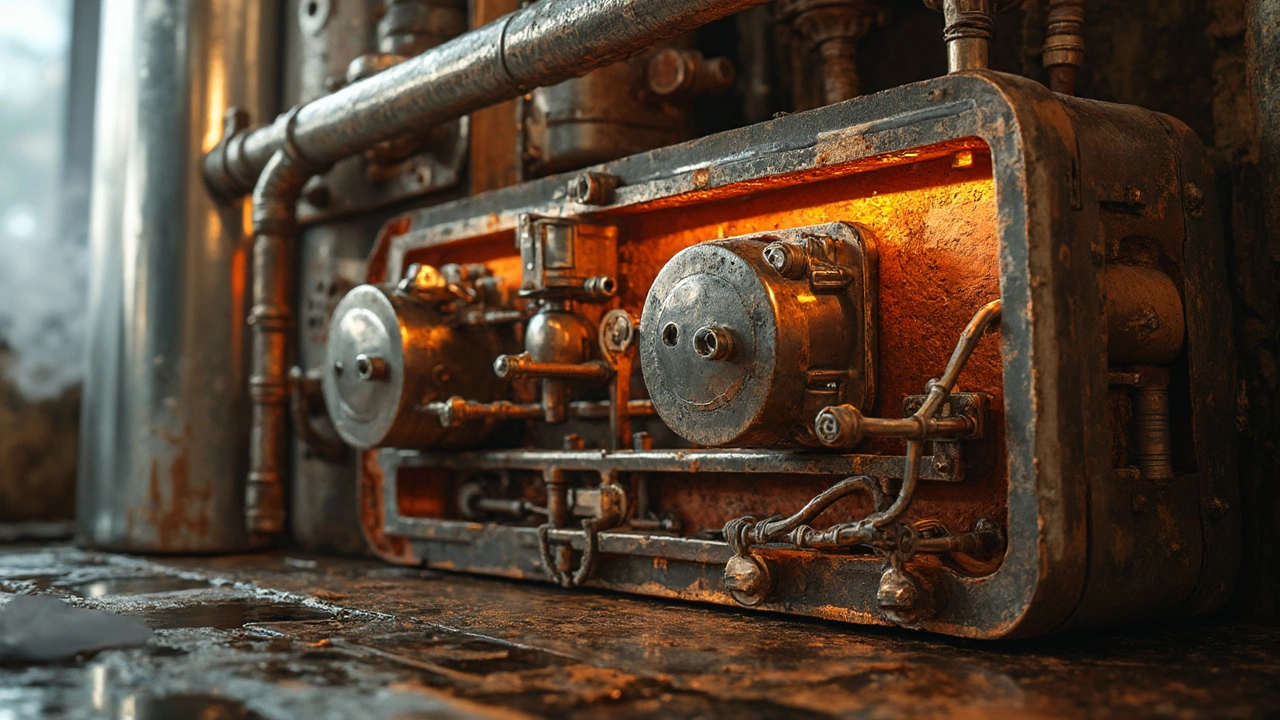
Sediment Buildup: A Sneaky Problem
Let's talk about a common yet sneaky culprit behind hot water issues: sediment buildup. Over time, minerals in your water can settle at the bottom of the tank, forming a layer of gunk. This is more common if your water is particularly hard. As this layer gets thicker, it creates a barrier between the burner and the water, which reduces efficiency. The result? Less hot water and higher energy bills.
Why is this so common? Well, it's not just you—it's everywhere. In areas with hard water, the problem is even more pronounced. Calcium and magnesium love to settle in and make your water heater their vacation home. If you've noticed your home taking longer to heat water or odd popping sounds from the tank, sediment might be the issue.
What to Do About Sediment Buildup?
The good news is, this issue is fixable. Many homeowners tackle this with a simple tank flush. Here's a quick rundown on how to go about it:
- Turn off the power to your water heater. For gas heaters, switch the gas valve to 'pilot.'
- Allow the water to cool slightly for safety.
- Attach a garden hose to the drain valve, directing it to a safe drainage area like a nearby drain or driveway.
- Open the valve and let the water flow out until it runs clear. This flushes out the sediment.
- Close the valve, detach the hose, and refill the tank. Be sure to turn the power back on.
Regularly flushing the tank, ideally every six months, is a great preventive measure. Not only does this help maintain your heater's performance, but it also extends the life of the appliance.
For those who love data, here's a quick look at how often homeowners face sediment issues:
| Region | Percentage of Homes with Sediment Problems |
|---|---|
| Water heaters in hard water areas | 75% |
| Water heaters in soft water areas | 20% |
Keep an eye (and ear) out for any unusual signs your tank is struggling. Addressing sediment buildup early can save you from a headache—and cold showers—later on!
The Importance of Regular Maintenance
Keeping your water heater in tip-top shape isn’t just about ensuring a warm shower; it’s also about prolonging the life of your appliance and saving some cash in the long run. A little bit of regular maintenance goes a long way in preventing those annoying 'no hot water' scenarios.
First off, let's talk about flushing your tank. Over time, minerals from your water can build up, leading to sediment at the bottom of your tank. This sediment makes your heater work harder, wearing it out quicker. Flushing your tank annually helps to remove these particles and improve the heater's efficiency.
Check the Pressure Relief Valve
This little device is your heater's safety switch. It's crucial that it works properly to prevent excess pressure. Every six months, test it by lifting the valve's lever and letting it snap back. If water doesn't discharge, it's time for a replacement.
Inspect the Anode Rod
The anode rod is a crucial component that prevents rust inside the tank. It sacrifices itself to corrosion, protecting the tank. Typically, it should be replaced every three to five years. Checking it annually is a smart move.
Maintaining the Thermostat
Setting your thermostat correctly not only helps avoid water heater repairs but also keeps your energy bills in check. Set it to about 49°C (120°F) to balance between comfort and safety.
- Flush the tank every year.
- Check the pressure valve every six months.
- Inspect the anode rod yearly.
- Adjust the thermostat to 49°C.
If you're diligent with these simple maintenance tasks, your heater will thank you with years of reliable hot water. Plus, these check-ups can help you spot potential issues before they become costly repairs.
Preventive Tips for Consistent Hot Water
Keeping your hot water flowing is all about regular upkeep. Like everything in your home, your water heater needs some love now and then. Let's explore some ways you can keep those chilly surprises at bay.
Regular Inspection and Maintenance
First off, check your manual for recommended maintenance schedules. Most manufacturers suggest annual inspections. A little once-over can catch minor issues before they snowball into costly repairs.
Flushing the Tank
One of the biggest culprits for reduced efficiency is sediment build-up in the tank. It's advisable to flush the tank at least once a year. Here's a simple step-by-step:
- Turn off the power or gas supply to the heater.
- Connect a garden hose to the drain valve at the bottom and lead the other end to a suitable drainage area.
- Open the valve and let the water run until clear.
- Close everything back up, remove the hose, and restore power or gas.
This clears out sediment and helps your heater run smoothly.
Temperature Check
Keeping your heater's thermostat at an optimal temperature, typically around 120°F (49°C), saves energy and prevents scalding. Regularly checking and adjusting this can keep your system more efficient.
Know When to Call a Pro
If you've done your checks and still feel something's off, it might be best to call a professional. They'll have the tools and expertise to handle more complex issues.
These simple actions can go a long way in ensuring that your water heater remains reliable. With a little effort, you can enjoy consistent hot water whenever you need it.

